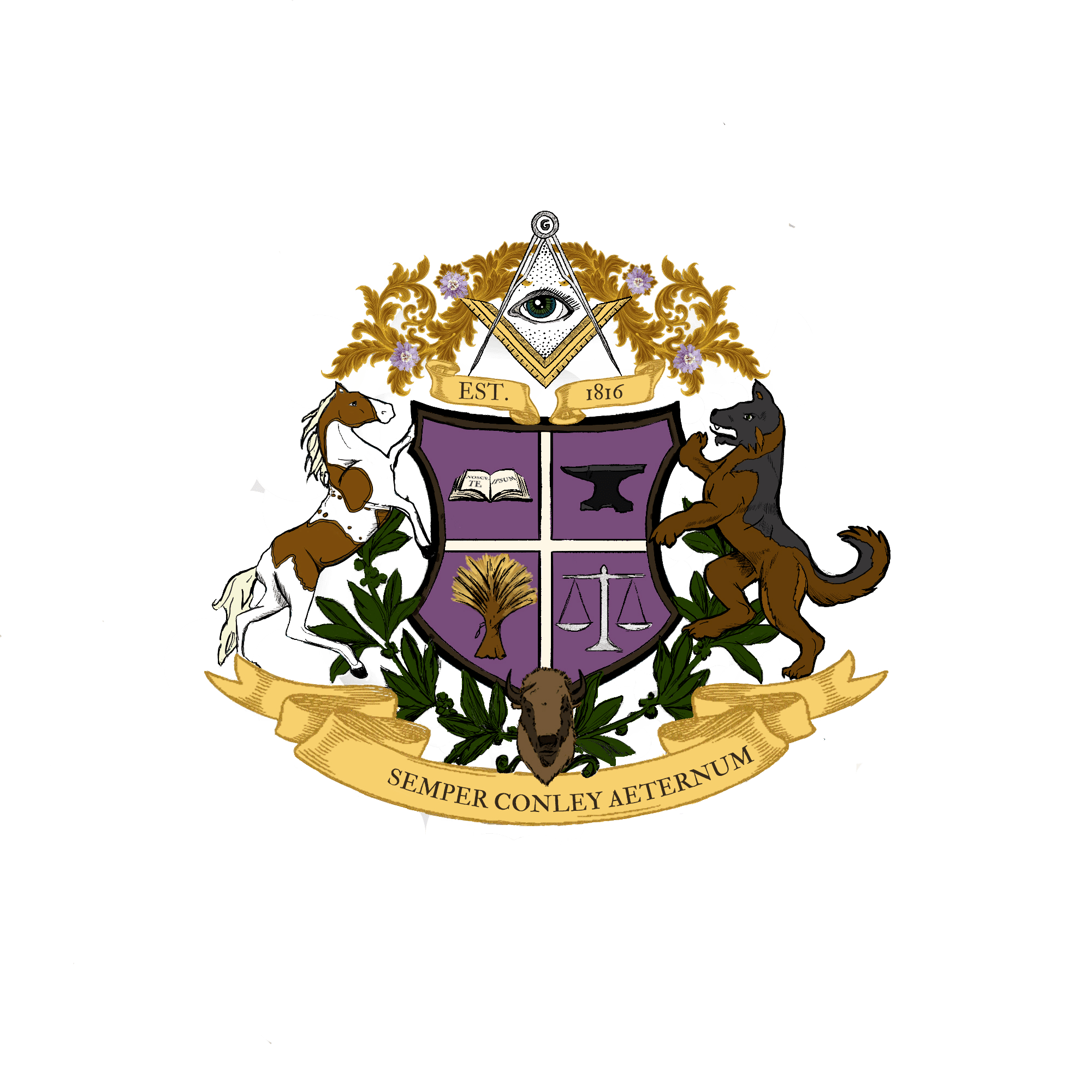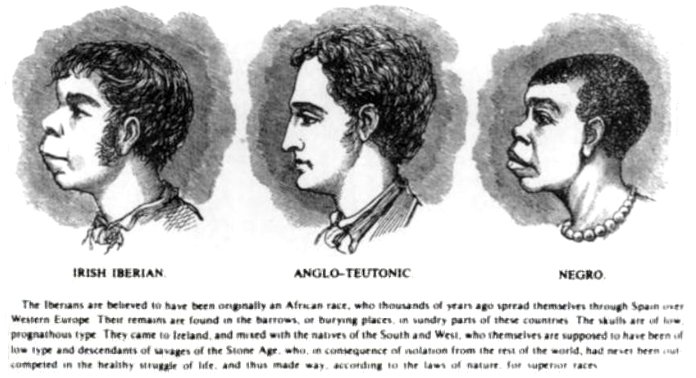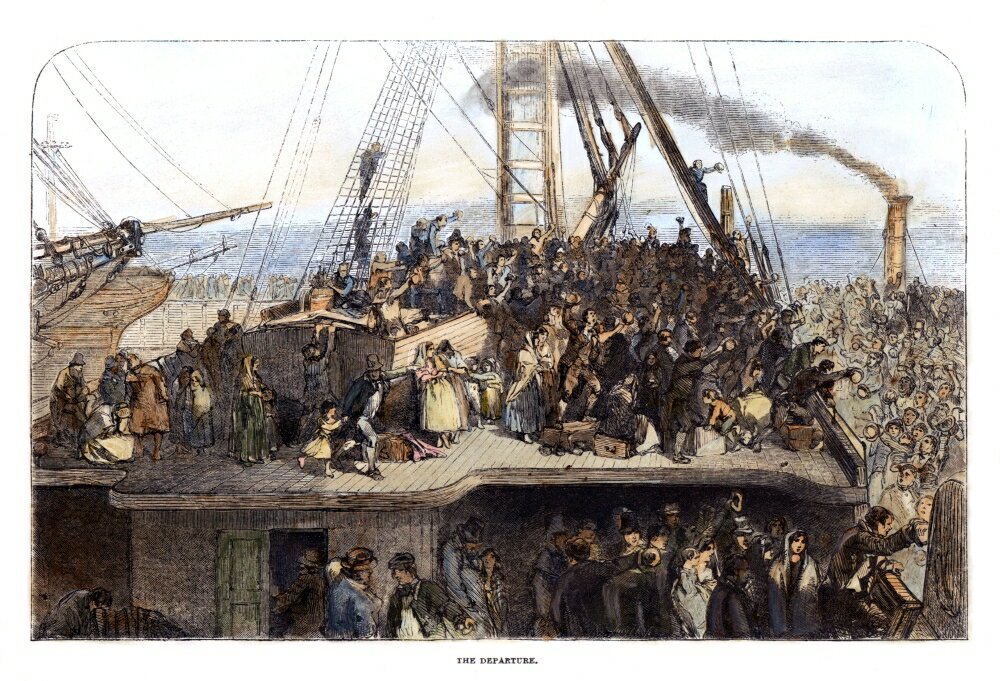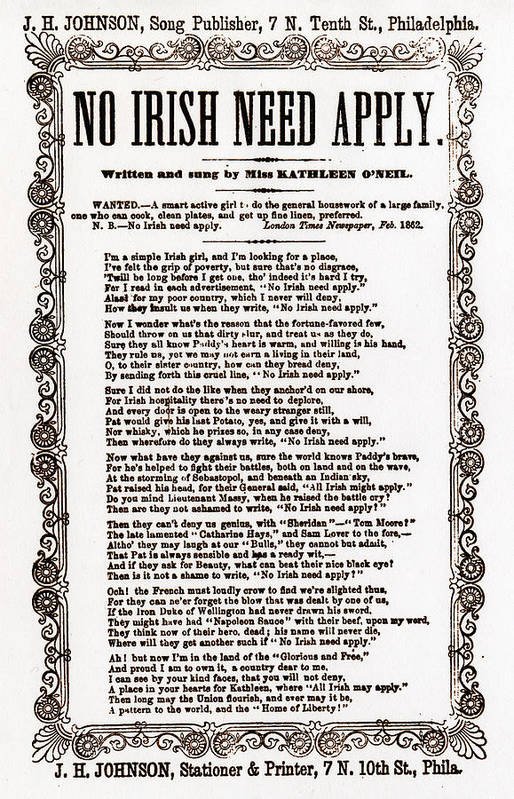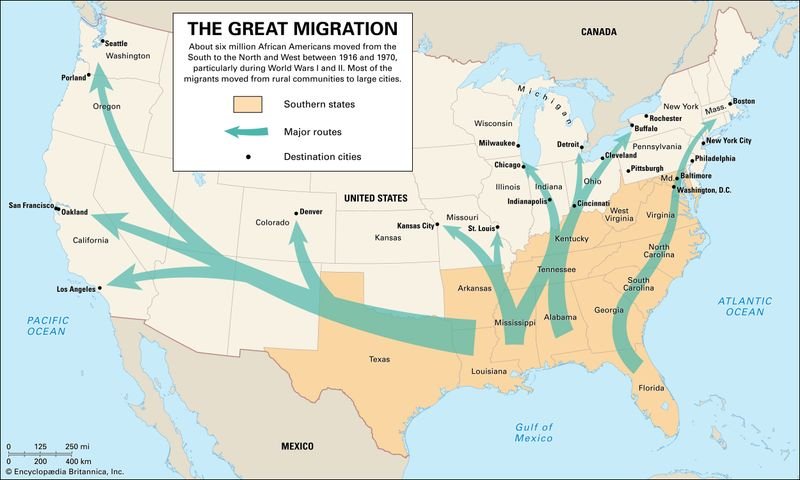FROM TRAGEDY, A STORY OF TRIUMPH
Authenticated Anti-Irish and Anti-African propaganda poster from the 1800s showing the environment of public opinion at the dawn of the Conley Family’s emergence in America. Institutionalized bias against many ethnic groups was common from much of American history, but the prejudice directed at those of Irish and African descent was especially heinous and public. The grit, tenacity, and independence of the various Conley and Connally branches originated in these conditions of ethnic barriers to social acceptance. Barred from any path into the American aristocratic circles in the years following 1776, the Conley’s created their own ethos.
The evolution of the Conley (Connally/Connelly) extended family tracks with that of the nation itself. Shortly before the American Revolution of 1776, the original Connallys arrived from Africa, England, Ireland and Scotland. The jumble of John, James, and Thomas names make it difficult to discern which specific one was the first to arrive.
The variances of spelling (Conolley, Conelly, Condly, Candly, Conelley, Conlee, Connerly, etc.) complicate certain types of research even further. For instance, there was a son of one Connally, who spelled his name Connoly, while living in the same household with his father. Thus, with dozens of situations like this, the documented history of the family prior to 1800 varies widely in clarity and accuracy. It is only the modern innovation of DNA matching that sheds light on certain connections. This is not dissimilar from many of America’s leading families, whose origins grow murky or opaque prior the American Revolution of 1776. Only one thing is certain - they were all commoners, not born to wealth or high status.
Little is known of those arriving from Africa with the tragedies of the Transatlantic Slave Trade. Family structures for African slaves were often a cruel and inhumane mix of slavery, indentured servitude, and exploitation.
There were children born out-of-wedlock, polygamous arrangements, concubines, and forced relations that resulted in a family of multiple ethnic identities. It was all tragic, but from tragedy, a story of triumph emerged. Manumission, and other processes of buying or granting freedom, were common. Most of situations entailed freedom granted to those who were the illegitimate children of small scale slave owners, or those people possessing rare vocational skills. In a few cases, freedom seems to have been granted to slaves as a reward for many years of obedience and companionship with owners in old age.
Government documents indicate the African ancestors likely arrived at the principal trading ports in Virginia between 1619 and 1800. Historians and genealogists both within, and hired by, the family have advanced many theories to the African origins. None of the findings were conclusive, and we may never know all of the facts.
Depiction of African families being split and sold in Virginia.
A SEARCH FOR A NEW BEGINNING
Depiction of the immigrants arriving from Ireland.
For those arriving from Ireland, there is more information, but not much more. The first to set foot in America appears to have been a James Connally, who arrived in Virginia from Donegal, Ireland in 1673. Government records show him altering his original name upon arrival from “O'Connolly” to Connally, while his brother adopted the spelling “Konnelly” in America. Yet other branches adopted the spelling ‘Conley’ for the surname upon moving to New York and Pennsylvania.
Both Irish and Black ancestors of the Conley Family suffered crippling levels of exclusion and bias. The inhumanity of 300 years the African slave trade in the British Colonies is well-chronicled. The marginalization of early Irish and Scots-irish immigrants has received considerable academic attention since the election of John F. Kennedy as President in 1961. For nearly 200 years, from just after 1600 until around 1800, upon hearing an Irish accent or or name, landlords would slam their doors confining Irish-Americans to the ghettos of the cities or remote forests of Appalachian Mountains.
Plentiful academic texts cover these atrocities, however the posters below provide clues to the origins of the tenacity, grit, and resiliency demonstrated by Connally/Conley/Connollys through the centuries.
MIGRATION ACROSS AMERICA
The First Migration to the West and South was driven by economic opportunity and an escape from ethnic bias. Both African and Irish ancestors moved West and South in search of a better life than the crowded East seaboard could provide.
Southwestern migration from Virginia into the wilderness of Kentucky, the Western Carolinas, Tennessee and Northern Alabama, defined the experience for most Conleys from 1700 until 1800. The state lines then were nothing like today. See the MAPS section of this site for an understanding of the changing dynamics of the British, French, and Spanish colonies which would become the United States. A search for opportunity and an escape from the crowded cities drive them. A preference for simply country living in forests and mountains is still evident.
The Second Migration to the North and far Northwest was driven by the industrialization of America.
